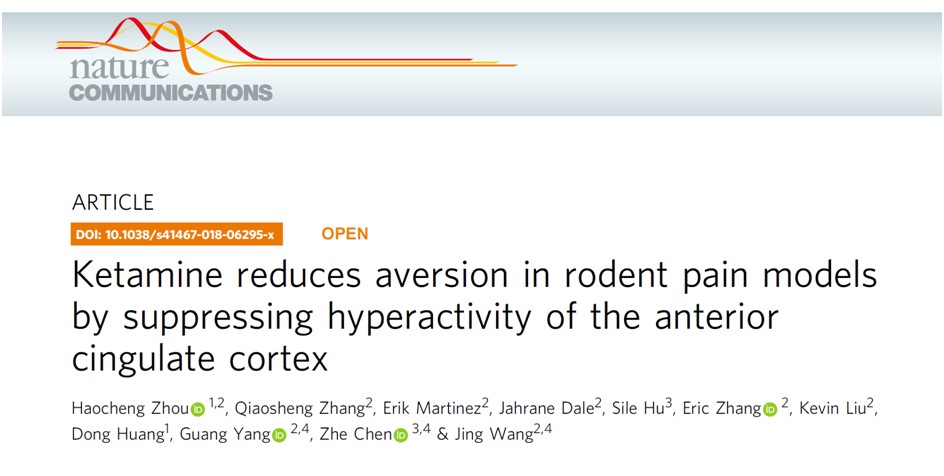Recently, the internationally renowned journal Nature Communications (IF=12.353) published the latest research results from the research team of Professor Huang Dong of the Third Xiangya Hospital of Central South University, “Ketamine reduces aversion in rodent pain models by suppressing hyperactivity of the anterior. Cingulate cortex" (2018-09-14, DOI: 10.1038/s41467-018-06295-x). The first author of the paper is Zhou Haojun, a Ph.D. student of CSU, and the Third Xiangya Hospital of Central South University is the first unit. The paper was completed under the guidance of the overseas tutor of the “Wisdom Gathering and Talents Cultivation Program” and the Professor Huang Dong from the Pain Department of the Third Xiangya Hospital.

According to reports, the previous treatment of pain and basic research are mostly limited to the sensory dimension. Pain, especially anxiety, depression and even fear caused by emotional dysfunction are gradually being paid attention to. Ketamine is a common general anesthetic that provides rapid and sustained relief of depressive symptoms and provides an effective alternative for the treatment of pain-related affective disorders. However, the neurological mechanisms of ketamine in relieving pain and pain-related affective disorders remain unclear, limiting the use of ketamine in the treatment of pain.
The paper reported for the first time that a single subanesthetic dose of ketamine can consistently alleviate aversive mood abnormalities caused by chronic pain. The important mechanism of ketamine to alleviate chronic pain is to inhibit the excessive discharge of neurons in the anterior cingulate gyrus. This finding confirms the feasibility of low-dose ketamine in the treatment of acute and chronic pain, revealing that anterior cingulate gyrus is an important target for the treatment of emotional disorders caused by chronic pain.
The project was supported by the China Scholarship Council (201606370208), the National Natural Science Foundation of China (81771101) and the “Wisdom Gathering and Talents Cultivation Program” of the Third Xiangya Hospital of Central South University.
Source: The Third Xiangya Hospital











